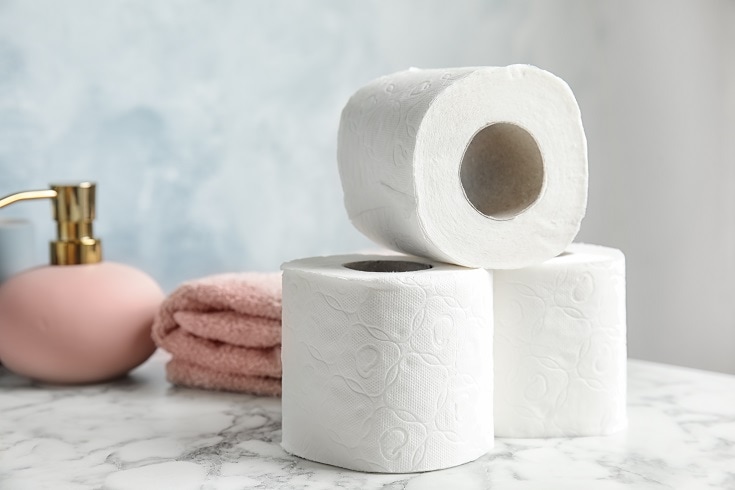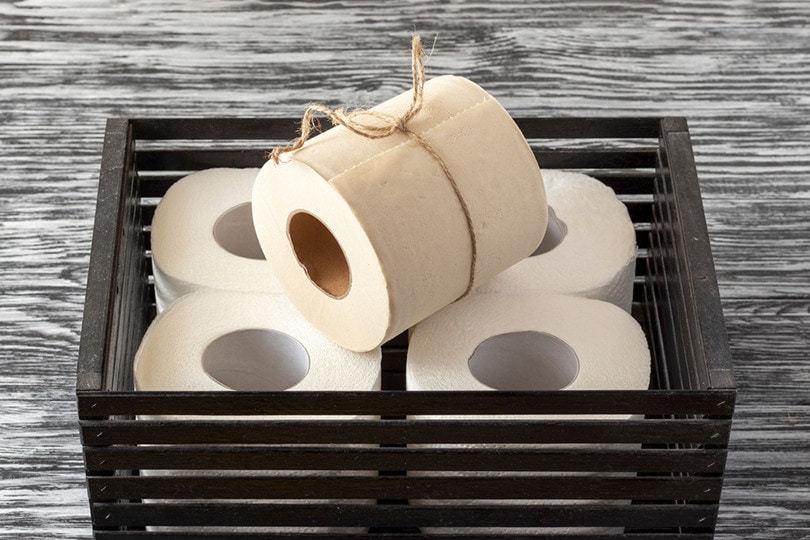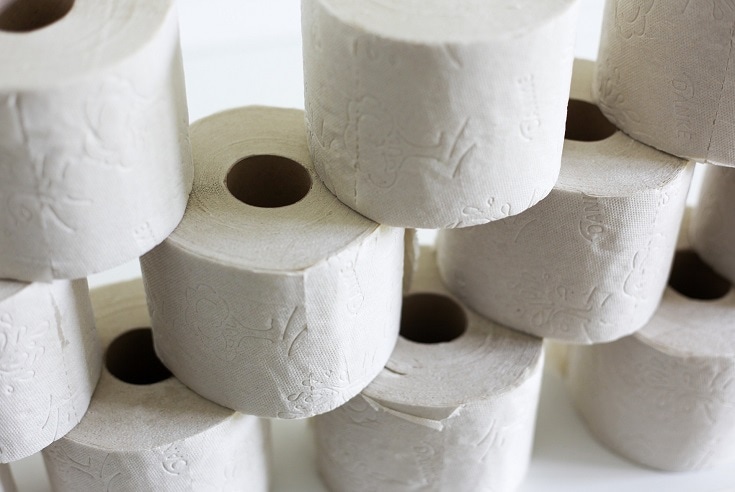Bamboo Toilet Paper vs. Regular: Which Is Better?
-
Codee Chessher
- Last updated:

The average American goes through 140 rolls of toilet paper a year, so at some point, we have to wonder if there’s a better way to get clean. Bamboo toilet paper is a relatively new product derived from bamboo plants, purporting to reduce paper waste and reduce carbon emissions. With an increasing demand for green products, it’s an intriguing prospect. How does bamboo toilet paper fare against normal toilet paper?
Overview of Bamboo Toilet Paper:

Bamboo toilet paper comes from bamboo plants, similar to how regular toilet paper comes from tree wood pulp. Depending on the brand and how many ply it is, it can be just as soft as any regular toilet paper brand.
Some people have the idea that bamboo toilet paper is somehow rough, but that’s because it’s known for durability. Bamboo toilet paper can hold three times its weight in water and resists getting soggy once wet.
As if those aren’t enough to convince you, bamboo toilet paper breaks down extremely fast after disposal, whether you have a septic tank or city water. Some types of toilet paper can cause blockages, but bamboo toilet paper will never cause a blockage in a pipe or tank.
How It’s Made
Bamboo is shredded into small pieces and boiled to gather its fibers, which can be pressed into various forms and shapes. For toilet paper, the pulp is flattened and left to dry. Once dry, the paper is gathered, packaged, and distributed.
Bamboo Sustainability
What makes bamboo extremely efficient for toilet paper is its rapid growth. Whereas a softwood or hardwood tree takes years and decades to mature, bamboo can grow as fast as 3 feet in one day. Also, bamboo grows extremely dense on even the most inhospitable land, making it ideal for high volumes of production. Another important factor is that bamboo toilet paper uses no chemicals to produce, whereas regular toilet paper frequently uses bleach.
When To Use
If you’re looking for ways to reduce your carbon footprint in your day-to-day life, switching from regular or recycled toilet paper to bamboo toilet paper can be a small but meaningful choice.
- More absorbent than regular toilet paper
- Biodegradable, meaning it breaks down quickly after use
- Typically contains no chemicals
- At least as strong as regular toilet paper, if not stronger
- Can be just as soft as any other toilet paper, depending on the brand
- Might not be as widely available
- May cost more than regular toilet paper
Overview of Regular Toilet Paper:

The majority of toilet paper brands fall under this category, though many produce recycled toilet paper as well. Regular toilet paper is produced using virgin wood pulp, and not recycled fibers or another source like bamboo.
The average tree can produce 100 pounds of toilet paper, but trees take a long time to grow, so people started looking for alternatives. Recycling helps a lot, but paper products derived from trees aren’t going anywhere. There’s a reason regular toilet paper is usually the cheapest: it’s cheap to produce in large quantities.
Regular toilet paper usually has longer fibers compared to recycled, meaning it can be very soft depending on the brand. 1-ply is the coarsest kind, and 3-ply is the softest. Regular toilet paper durability ranges from weak to almost as strong as bamboo toilet paper, also depending on the brand.
The biggest advantage of regular toilet paper is that it’s available virtually everywhere. By contrast, bamboo and recycled toilet paper are typically mail-ordered or found in large-chain supermarkets.
How It’s Made
Wood chips are turned into raw pulp, which is mixed with hot water and chemicals. After that, the paper is typically washed and bleached to achieve a uniformly white color. The resulting pulp is molded onto large flat trays, where it dries out and gets rolled up. If the toilet paper has a texture or company logo imprinted on it, that’s usually embossed before the paper is rolled up.
Recycled vs. Regular
Recycled toilet paper is produced using recycled fibers, as the name implies. Recycled toilet paper is typically of lower quality than regular toilet paper because it uses shorter fibers in its production, making the paper weaker. Recycled toilet paper does, however, have the advantage of generating 30% fewer carbon emissions.
When To Use
If you want the most cost-effective option available, regular toilet paper reigns supreme. There’s a wide variety available, from crude 1-ply to silky 3-ply, and you can find it everywhere. If you’re not all that concerned about reducing your carbon footprint and aren’t impressed with bamboo toilet paper, you should probably just stick to regular.
- Most cost-competitive toilet paper
- Many types available, from rough to very soft
- Consistent quality
- Most widely available toilet paper
- Uses bleach and other chemicals during production
- Uses virgin wood pulp, which diminishes the Earth’s natural resources over time
- May clog pipes or tanks, depending on the brand
Other Alternatives
Bidets have become wildly popular in recent years, offering a touchless alternative to the barbary of toilet paper. Models range from basic touch-free cleansing to premium features like heated seats and UV light self-cleaning.
A more unusual alternative to toilet paper is flannel. Yes, like the long, cozy shirts. In some situations, people opt to cut flannel into squares to use in lieu of toilet paper. The flannel is saved, washed, and then dried to be reused. This option is very similar to cloth diapers that people use, wash, and reuse to save on disposable products.

Which One Is Right For Me?
- If you’re concerned about reducing your carbon footprint and helping your septic system along the way, bamboo toilet paper is the way to go.
- If you don’t have access to stores that sell bamboo toilet paper, it might just be easier and even more responsible to keep using regular TP.
- By regularly using bamboo toilet paper, you can dramatically cut down on the amount of paper waste in your septic system. If you have a finicky septic tank, bamboo toilet paper might be one of the smartest switches you can make.
- If cost is important (when is it not?), regular toilet paper enjoys lower prices than virtually any other type. Bamboo toilet paper is typically marked up because it’s not as widely manufactured or distributed.
 Conclusion
Conclusion
While bamboo toilet paper is eco-friendly and helps reduce the strain on our septic systems, it’s not as widely available as regular toilet paper made from virgin wood pulp. Despite its great strength and durability, many people simply prefer regular toilet paper. If bamboo cultivation and production keep increasing, though, bamboo toilet paper might be the way of the future.
Featured Image Credit: New Africa, Shutterstock
Contents
